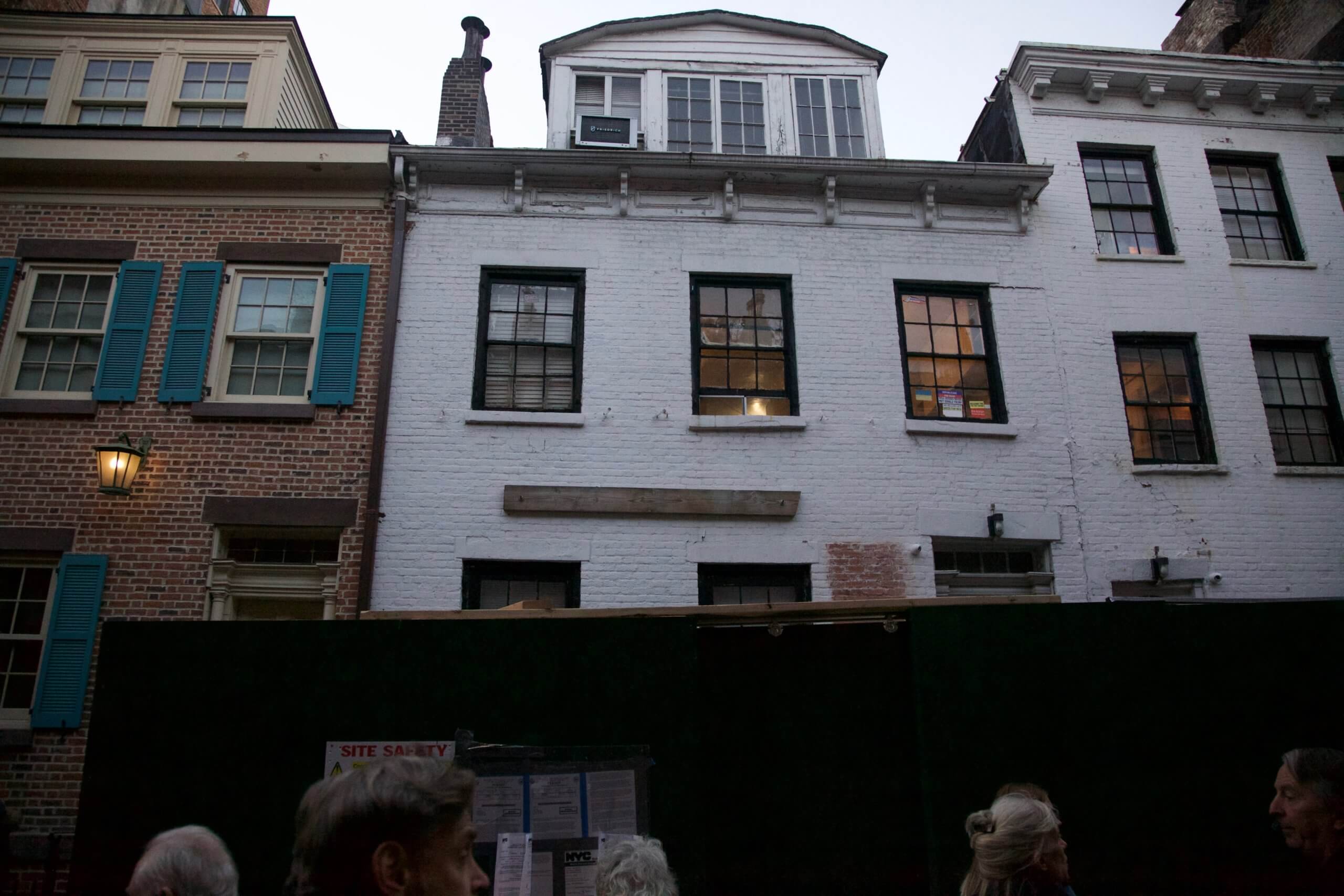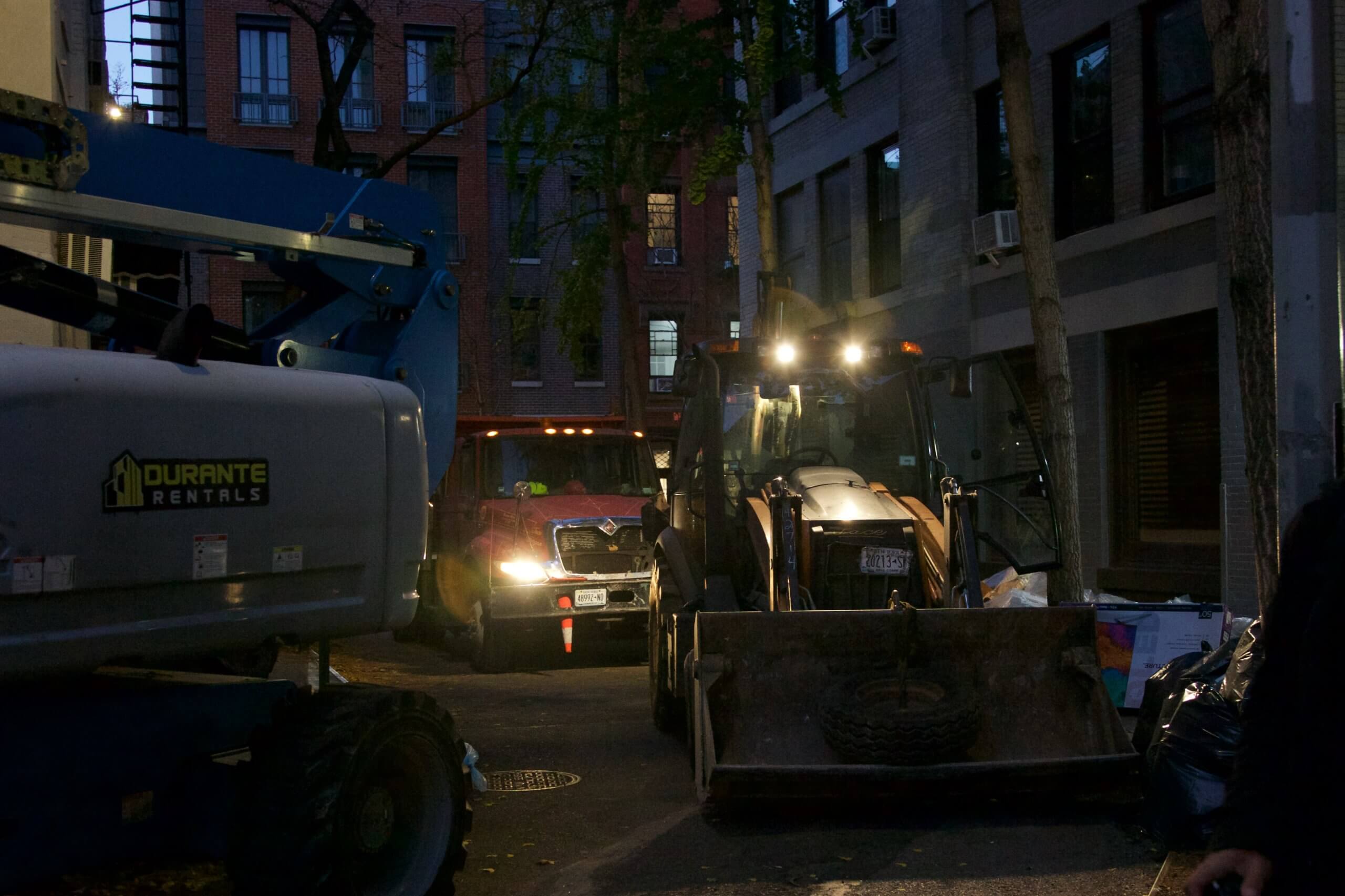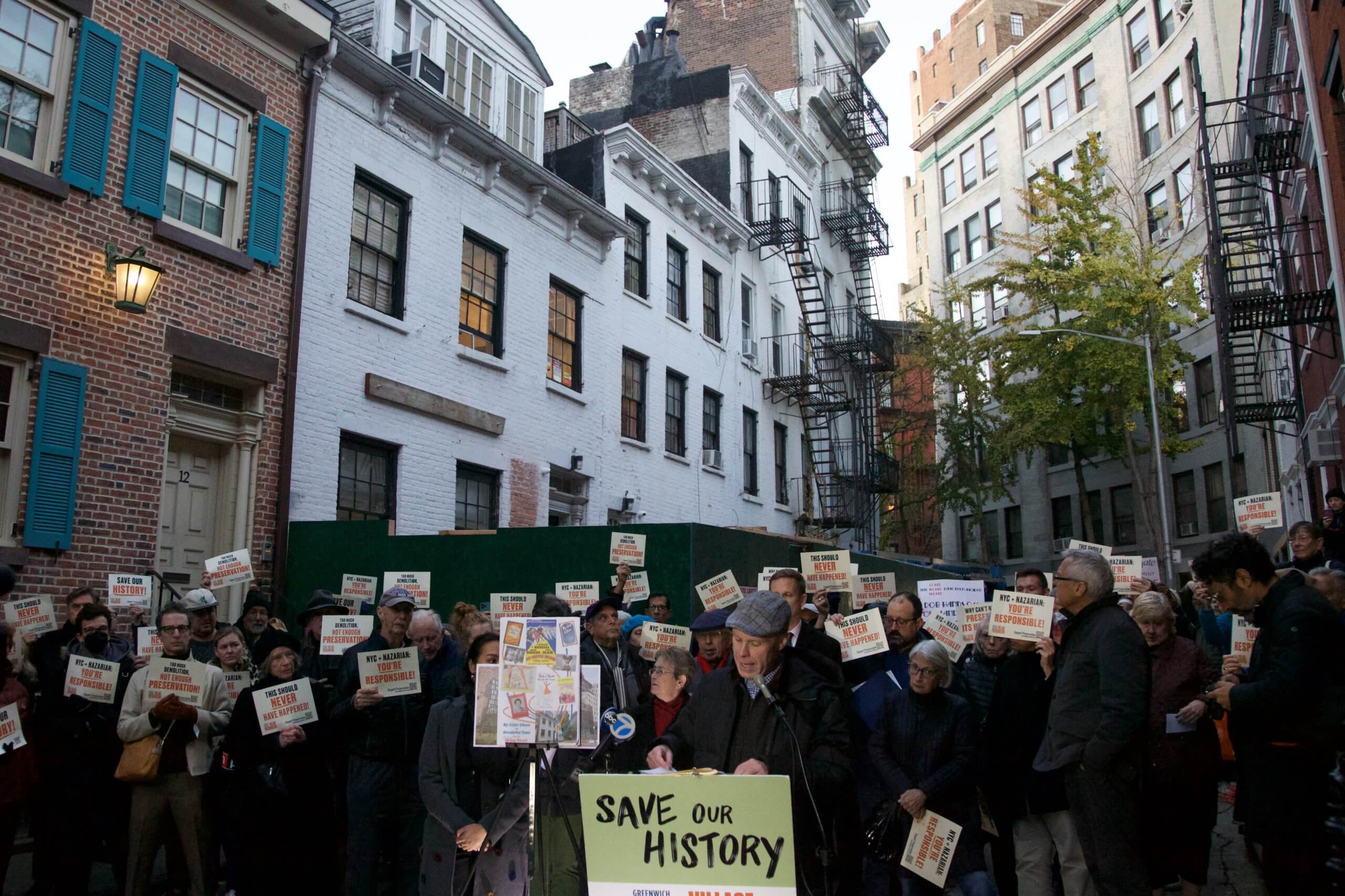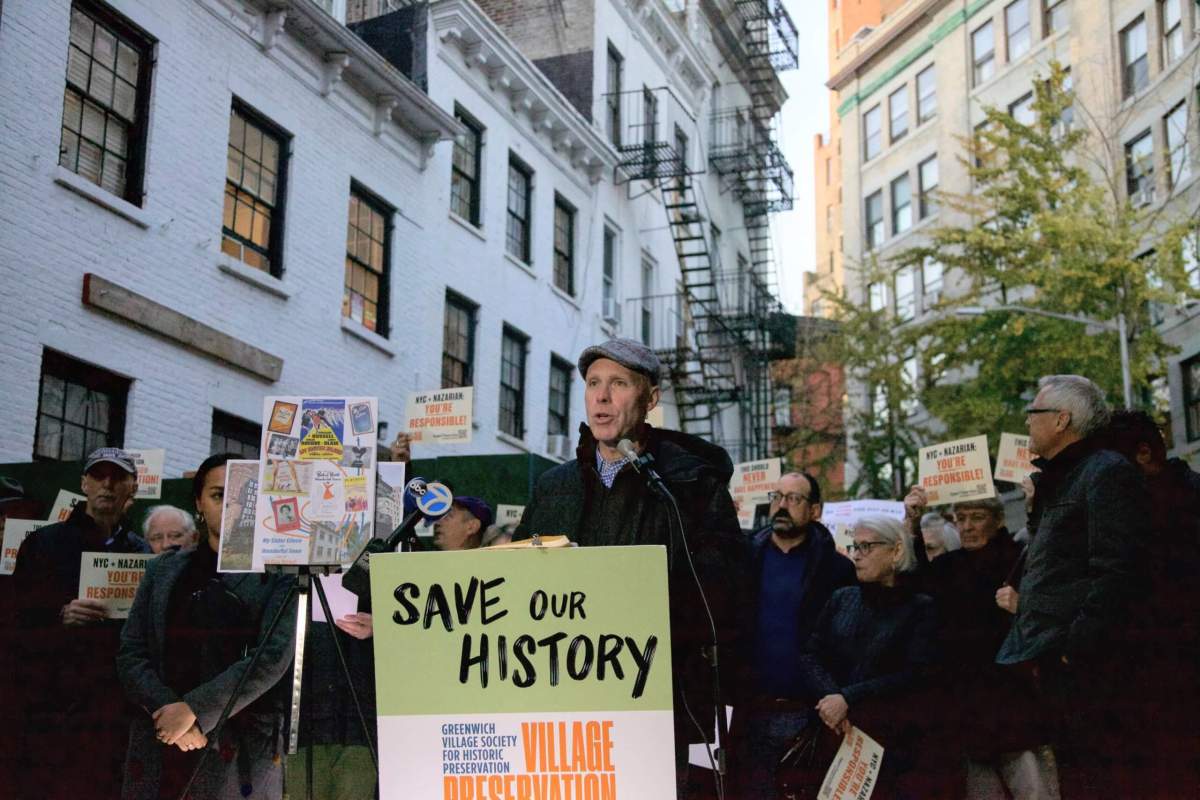After a Manhattan real estate company botched renovation work on the foundation of a 200-year-old, historically landmarked Greenwich Village house, the city ordered immediate demolition to prevent its collapse.
The neighborhood blowback has been swift. On Monday evening, neighbors, historical preservationists and electeds rallied outside the building, at 14 Gay Street, to condemn both the building’s owner and gaps in the city’s oversight over fragile historical buildings.
“This is a major policy failure,” said Council member Eric Bottcher, who added in his short 10-month tenure as a council member, he’s seen other instances of “demolition by neglect,” where the city Department of Buildings intervenes at the point of no return for a historical building.
The DOB’s website documents safety complaints at the location that go back years. The Greenwich Village Preservation Society, which organized the rally, also highlighted the track record of its owner, the Nazarian Property Group, which has a history of overseeing hazardous building conditions and unauthorized construction work.
“We expect the Department of Buildings not to just give a violation, but to follow up on it. For years, there have been complaints, there have been violations issued and no action that holds people accountable,” said Lower Manhattan Assemblymember Deborah Glick.

The DOB has ordered the owners to carefully dismantle the building in a way that will, according to Village Preservation’s executive director Andrew Berman, allow them to put the historical structure back together brick by brick and protect the neighboring houses. The agency said that it will hold the property owner accountable, but did not respond to a question asking for details about how it would do so.
“Putting the public at risk with dangerous unapproved construction work is unacceptable, and we will be taking appropriate action to hold the responsible parties accountable,” said DOB spokesperson Ryan Degan.
The white brick townhouse at 14 Gay Street was built around 1827 and became home to New Yorker writer Ruth McKenney who penned some of her famous short stories there in the 1930s.
According to background information and a timeline of events that the city agency sent out, DOB inspectors were called to the building last Monday and found that the contractors were not properly following the engineer’s approved plans for the permitted foundation wall work. Next door at 16 Gay street, also owned by the Nazaraion Group, the inspectors found that unauthorized work had been performed on its foundation wall.
DOB engineers determined that the illegal work had thrown it into immediate danger of collapse, and issued an emergency work order to demolish the building using hand tools from the exterior of the building.

By Monday, the demolition process had begun. During the rally, contractors hired by the building’s owner arrived at the scene with construction trucks to begin the work.
Electeds and advocates demanded that the city audit and meaningful reform the DOB and Landmarks Preservation Committee systems for monitoring conditions and work on historical buildings, which they say allows owners to neglect the buildings to the point where they are demolished by the DOB as “safety hazards.”
“The city needs to be hands-on in a case like that. They need to be checking every day, not relying on some outside engineer who the owner hires to sign off on his plans and say, ‘Everything’s in good order here,’” Andrew Berman told amNY and the Villager.
The advocates also called on the city to carefully inspect the conditions at every one of the buildings the Nazarian Property Group owns on the block: 14-18 Gay St. and 16-20 Christopher Street.
In the throng after the press conference, a neighbor approached Berman to ask what economic incentives he thought should best be codified to prevent this behavior from developers in the future.
Berman said that the city needs to “make sure that [property owners] are penalized appropriately and that all that they get to do is rebuild the building as it was before, which would obviously be much more expensive than if they just kept it.”





































